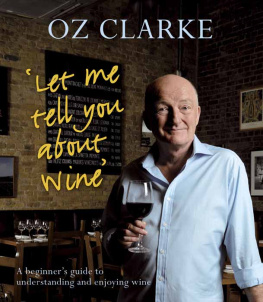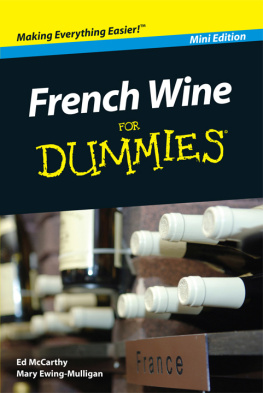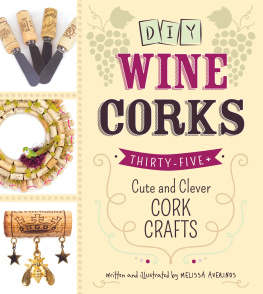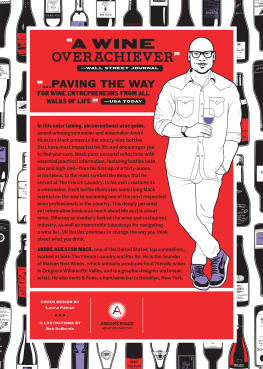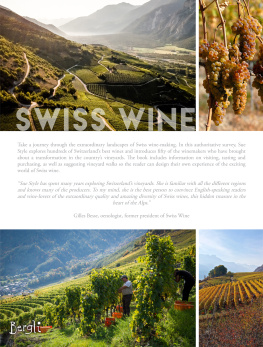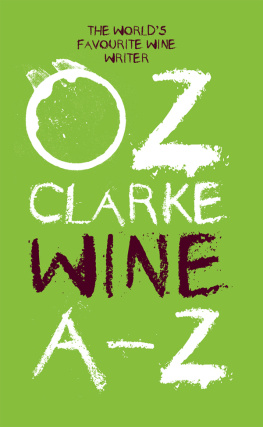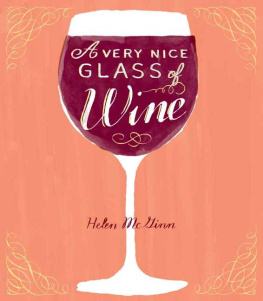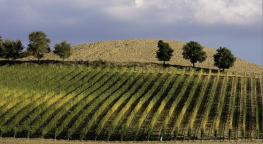Thank you for purchasing this Simon & Schuster eBook.
Join our mailing list and get updates on new releases, deals, bonus content and other great books from Simon & Schuster.
C LICK H ERE T O S IGN U P
or visit us online to sign up at
eBookNews.SimonandSchuster.com
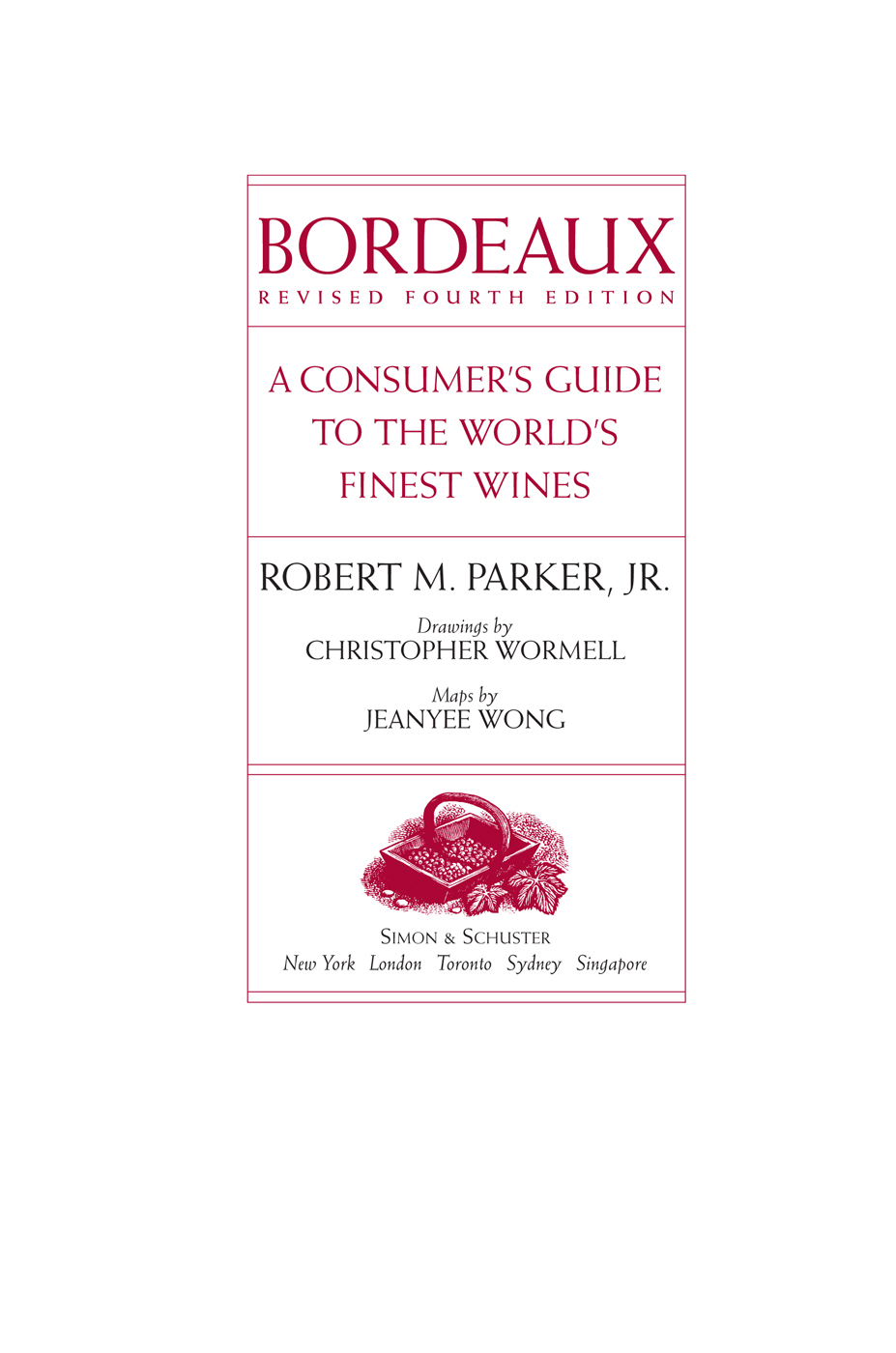
CONTENTS
To my precious Pat and Maia
ACKNOWLEDGMENTS
To the following people... thanks for your support: Jim Arseneault; Anthony Barton; Ruth and the late Bruce Bassin; Herv Berland; Bill Blatch; Thomas B. Bhrer; Daniel Boulud; Christopher Cannan; Dick Carretta; Jean-Michel Cazes; Corinne Cesano; Jean-Marie Chadronnier; M. and Mme. Jean-Louis Charmolue; Charles Chevalier; Bob Cline; Jeffrey Davies; Hubert de Bouard; Jean and Annie Delmas; Jean-Hubert Delon and the late Michel Delon; Jean-Luc Le D; Dr. Albert H. Dudley III; Barbara Edelman; Fdric Engrer; Michael Etzel; Paul Evans; Terry Faughey; Joel Fleischman; Han Cheng Fong; Maryse Fragnaud; Mme. Capbern Gasqueton; Laurence and Bernard Godec; Dan Green; Josu Harari; Alexandra Harding; Ken-ichi Hori; Dr. David Hutcheon; Barbara G. and Steve R. R. Jacoby; Jean-Paul Jauffret; Daniel Johnnes, Nathaniel, Archie, and Denis Johnston; Ed Jonna; Elaine and Manfred Krankl; Allen Krasner; Franoise Laboute; Patrick Leon; Susan and Bob Lescher; Pierre Lurton; Bernard Magrez; Patrick Maroteaux; Christian, Jean-Franois, and Jean-Pierre Moueix; Jerry Murphy; Bernard Nicolas; Jill Norman; Les Oenarchs (Bordeaux); Les Oenarchs (Baltimore); Franois Pinault; Frank Polk; Paul Pontallier; Bruno Prats; Jean-Guillaume Prats; Dr. Alain Raynaud; Martha Reddington; Dominique Renard; Michel Richard; Alan Richman; Huey Robertson; Dany and Michel Rolland; Pierre-Antoine Rovani; Yves Rovani; Robert Roy; Carlo Russo; Ed Sands; Erik Samazeuilh; Bob Schindler; Ernie Singer; Park B. Smith; Betsy Sobolewski; Elliott Staren; Daniel Tastet-Lawton; Lettie Teague; Alain Vauthier; Steven Verlin; Peter Vezan; Robert Vifian; Sona Vogel; Jeanyee Wong; and Grard Yvernault.
A very special thanks is in order for several people who have done a splendid job in bringing this mass of information to book form. At Simon & Schuster, my editor Amanda Murray; her assistant, Christina Richardson; and the production team of Scott Gray, Jeanette Olender, and John Wahler. Thanks also to Joan Passman, my assistant state-side; Annette Piatek, who did much of the typing for this book; Elisabeth Jaubert, the wizard responsible for the procurement of the labels that so attractively adorn its pages; and my former Wine Advocate proofreader, editor, and lifelong drinking, eating, and tasting friend, Dr. Jay Miller.
PREFACE TO THE 2003 EDITION
WHY BORDEAUX IS SIGNIFICANTLY BETTER TODAY THAN IT WAS 25 AND 50 YEARS AGO
The oldest courtier firm in Bordeaux, Tastet and Lawton, has provided Bordeaux vintage assessments since 1795. In order to make the following argument I have used their evaluations of vintages in which the highest are rated exceptional, then good to very good, followed by mediocre or poor. For the period from 19001939 (40 vintages) only three vintages were rated exceptional, 10 good to very good, and 27 mediocre or poor. In contrast, during the last 21 years, 19802000, four vintages were rated exceptional by Tastet and Lawton, 13 were good to very good, but only three were mediocre or poor (1992, 1991, and 1984). I do not believe that global warming can be held accountable for this extraordinary change in the quality of Bordeaux vintages.
Looking back over my tasting notes of the last quarter of a century, it is interesting to note how many truly legendary wines were produced in some of the most noteworthy vintages. Being as generous as possible, the 1945 Bordeaux vintage, considered to be one of the mythical vintages of the last 100 years, actually produced only 2530 profoundly great red wines. Even in 1982, which established my reputation as a serious wine critic, the number of monumental reds is less than three dozen. In 2000, according to my tastings, approximately 150160 great winesabout 2830% of what I tastedwere produced. Obviously I cannot go back in time, but my instincts suggest the raw materials available in 1945 as well as 1982 were not dissimilar from those that were harvested in 2000.
Why is modern-day Bordeaux so much better than it was a mere 20, 30, 40, or 50 years ago? I have listed the reasons in five categories: 1. progressive changes in the vineyard, 2. techniques and modern methods that take place in the wine cellars, 3. changes in the wines upbringing and bottling, 4. the competition that exists in the modern world and the role of the informed consumer, as well as the influence of wine critics, and 5. miscellaneous changes such as improved methods for weather forecasting.
PROGRESSIVE CHANGES IN THE VINEYARD
In the 1960s and 1970s, octogenarian professor Dr. Emile Peynaud and famed professor of oenology Dr. Pascal Ribeau-Gayon, departmental head of oenology at the University of Bordeaux between 1977 and 1995, began advocating significant changes in viticultural management. Later harvest dates were encouraged in order to pick riper fruit with lower acid levels as well as sweeter tannin and greater fruit characteristics. Later harvesting automatically produces wines lower in acidity and slightly higher in alcohol. Moreover, if the harvest is not undone by rain, exceptional fruit and ripeness can be achieved. This advice is 3040 years old.
Along with these changes, modern-day sprays and treatments aimed at preventing rot in the vineyard were begun in the 1970s and accelerated in the 1980s. Recent good vintages such as 1999, 1994, 1983, 1979, and 1978 would undoubtedly have been destroyed by mildew in the 1950s and 1960s. At the same time, there was a growth in the philosophy of going back to the vineyard (where most serious wine producers believe 90% of the quality emerges) to promote more organic techniques to encourage the health of the vines. There was also a movement toward developing a better understanding of viticulture. New techniques (called extreme or radical viticulture) became standard practice in the late 1980s and 1990s. This included the curtailing of yields by aggressive pruning in the winter and spring and crop thinning (cutting off bunches of grapes) in summer to encourage lower yields. With extremely healthy vines, yields would be expected to rise, but the opposite is actually the case as yields have dropped significantly for the top estates, from highs of 60100 hectoliters per hectare in the mid-1980s, to 2550 hectoliters per hectare in recent vintages. At the same time, other more radical viticulture techniques have been implemented. These include leaf pulling (to encourage air flow as well as allowing more contact with the sun), shoot positioning (to enhance sun exposure), and the ongoing research with clones and root stocks designed to eliminate those root stocks and clones that produce overly prolific crops of large-size berries. The movement of harvested grapes is also done with much more care and, in smaller containers, is designed to prevent bruising and skin breakage.
In 2003, the Bordeaux vineyards are healthier, have lower vigor, and are producing smaller and smaller berries and crops of higher and higher quality fruit. All of this is designed to produce the essence of the terroir, enhance the character of the vintage, and reveal the personality of the varietal or blend.
TECHNIQUES AND MODERN METHODS THAT TAKE PLACE IN THE WINE CELLARS
The famed first-growths Haut-Brion and Latour were two of the earliest estates to invest in temperature-controlled stainless-steel fermenters: Haut-Brion in the early 1960s and Latour in 1964. The advantage of temperature-controlled fermenters, which are now being replaced by some avant garde producers with open-top temperature-controlled wood fermenters (a new wrinkle on the old wooden vats used prior to the advent of temperature-controlled steel), is that it allows a producer to harvest as late as possible, picking grapes at full phenolic maturity and with high sugars. In the old days, this often happened by accident. In fact, it was often both feared and discouraged, as fully ripe grapes were tricky to vinify without temperature control. Many of the Mdoc 1947s, not to mention some of the 1929s, were ruined by excessive volatile acidity because producers did not have the ability to control fermentation temperatures. If temperatures soar to dangerously high levels, the yeasts that convert the sugar into alcohol are killed, setting off a chain reaction that results in spoiled wines with excessive levels of volatile acidity. This was frequently a problem when harvests occurred during hot weather. Stories of producers throwing in blocks of ice to cool down their fermentations is not just another vineyard legend. It actually happened in 1959, 1949, and 1947. Certainly the advent of temperature-controlled fermenters, whether steel or wood, has been a remarkable technological step for the advancement of wine quality. It allows producers to harvest (assuming weather permits) at their leisure and bring in fully mature grapes knowing that at the push of a button they can control the temperature of each of their fermentation vats. This has resulted in significantly better wines with fewer defects, sweeter fruit, as well as riper tannin in addition to lower acidity.
Next page
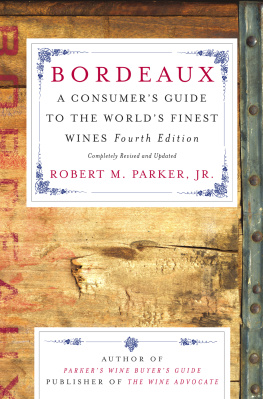
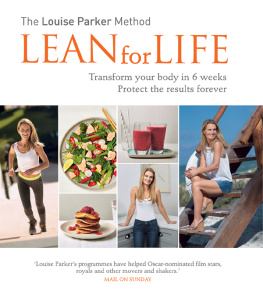

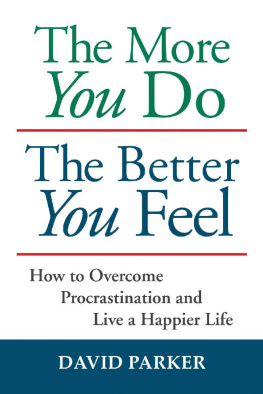
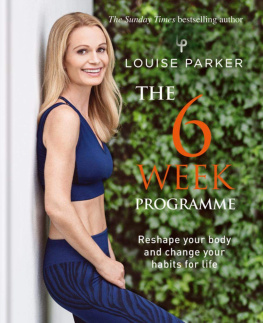

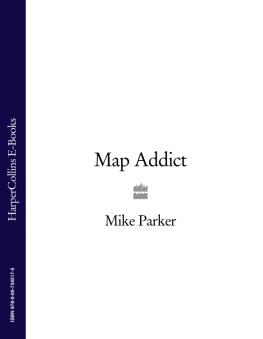
![Jon Bonné - The New French Wine [Two-Book Boxed Set]: Redefining the Worlds Greatest Wine Culture](/uploads/posts/book/443558/thumbs/jon-bonn-the-new-french-wine-two-book-boxed.jpg)
